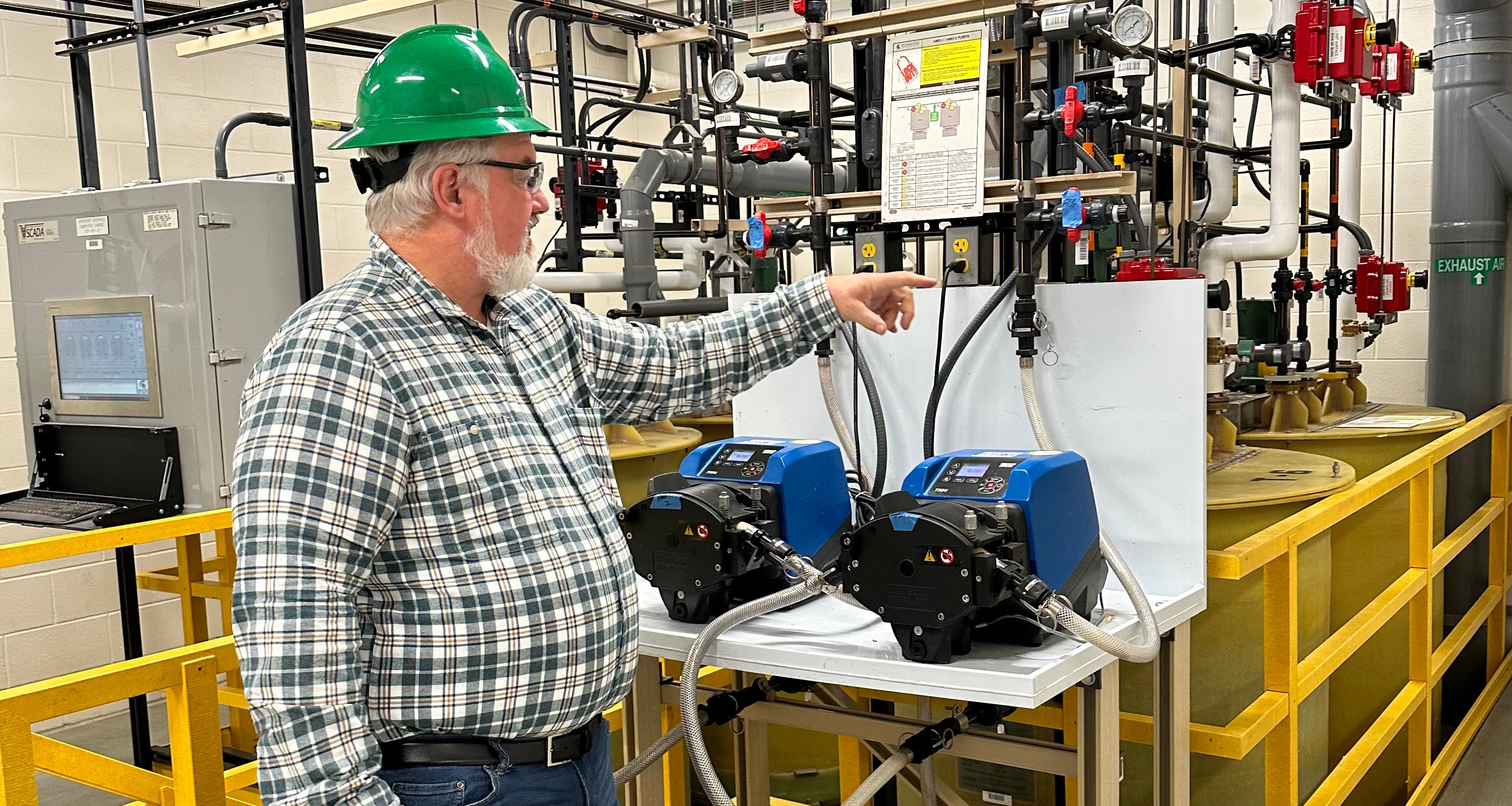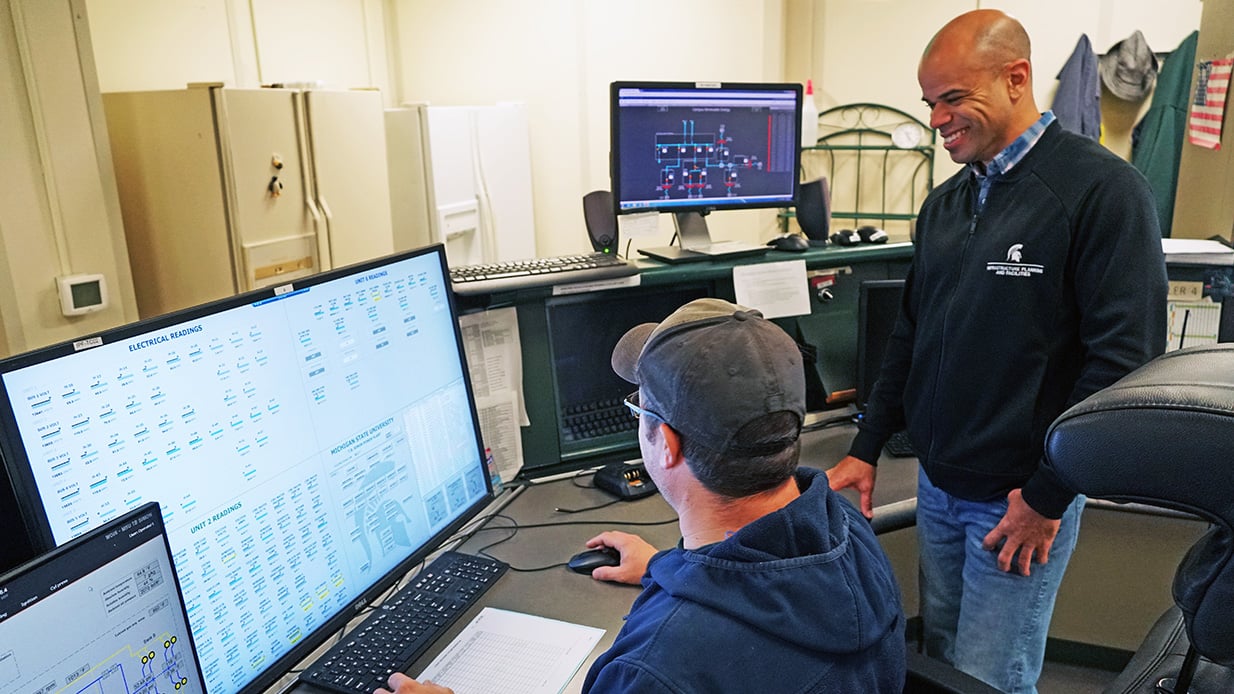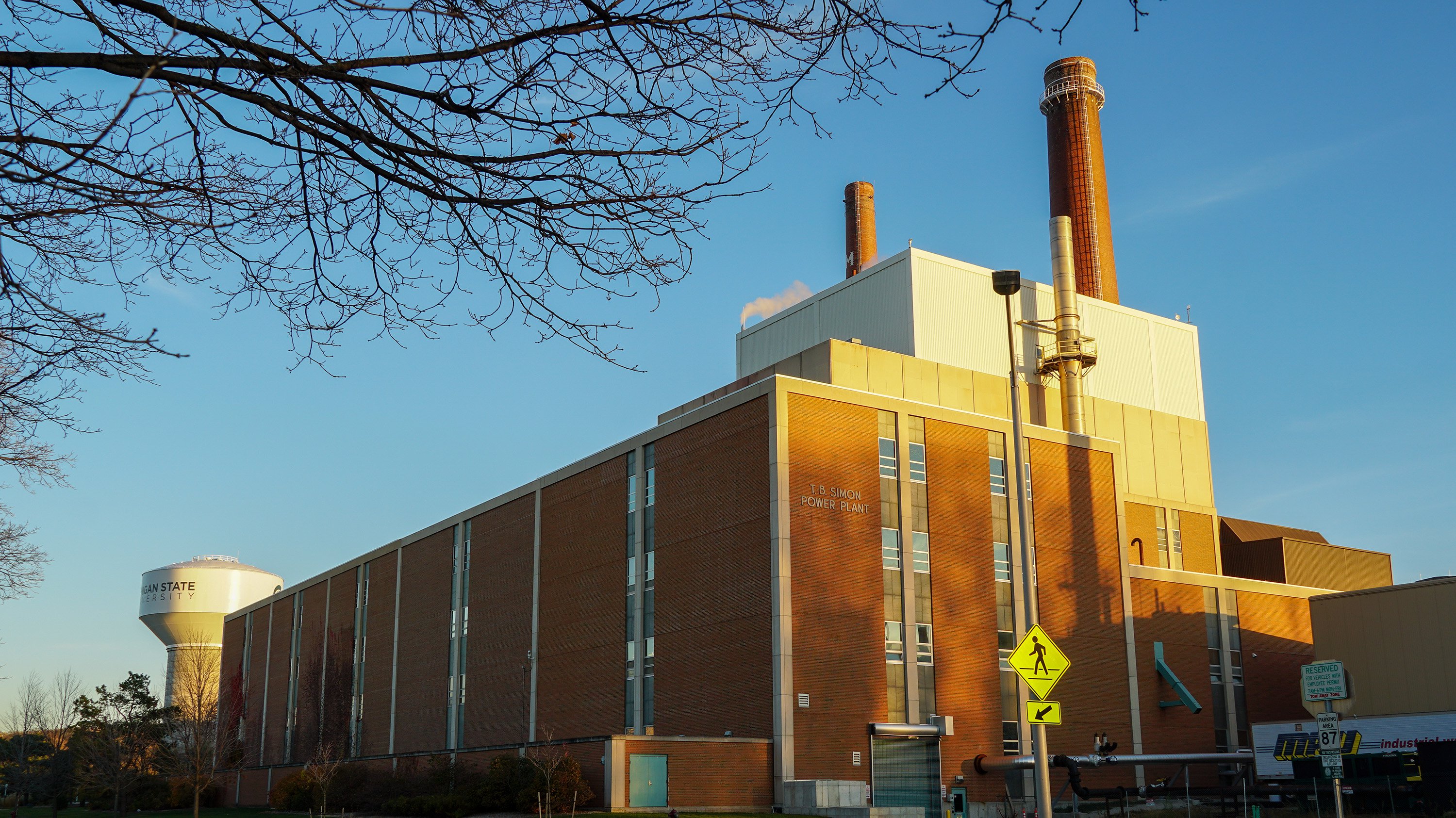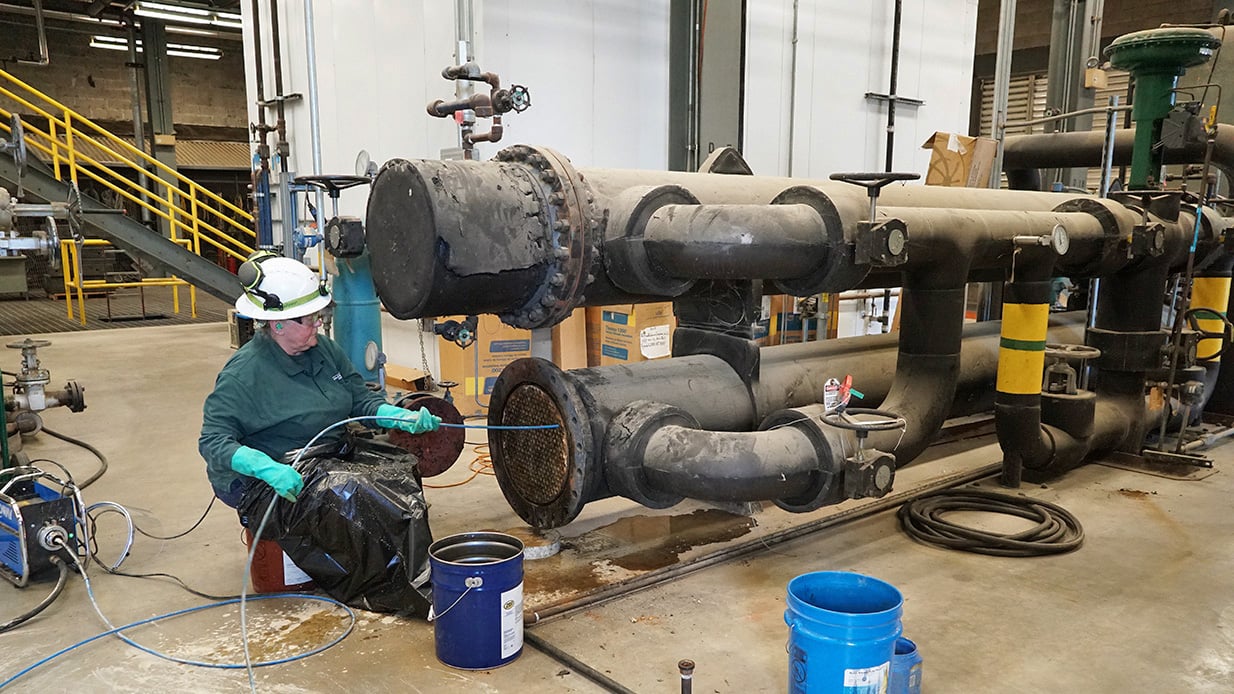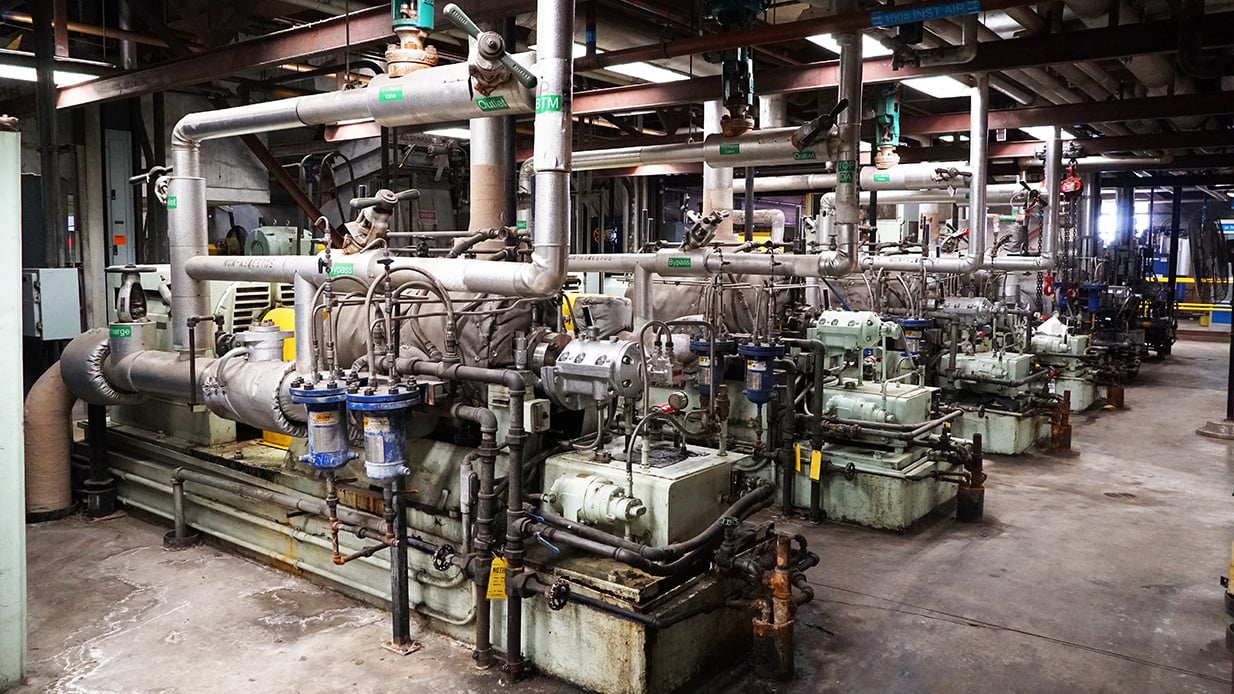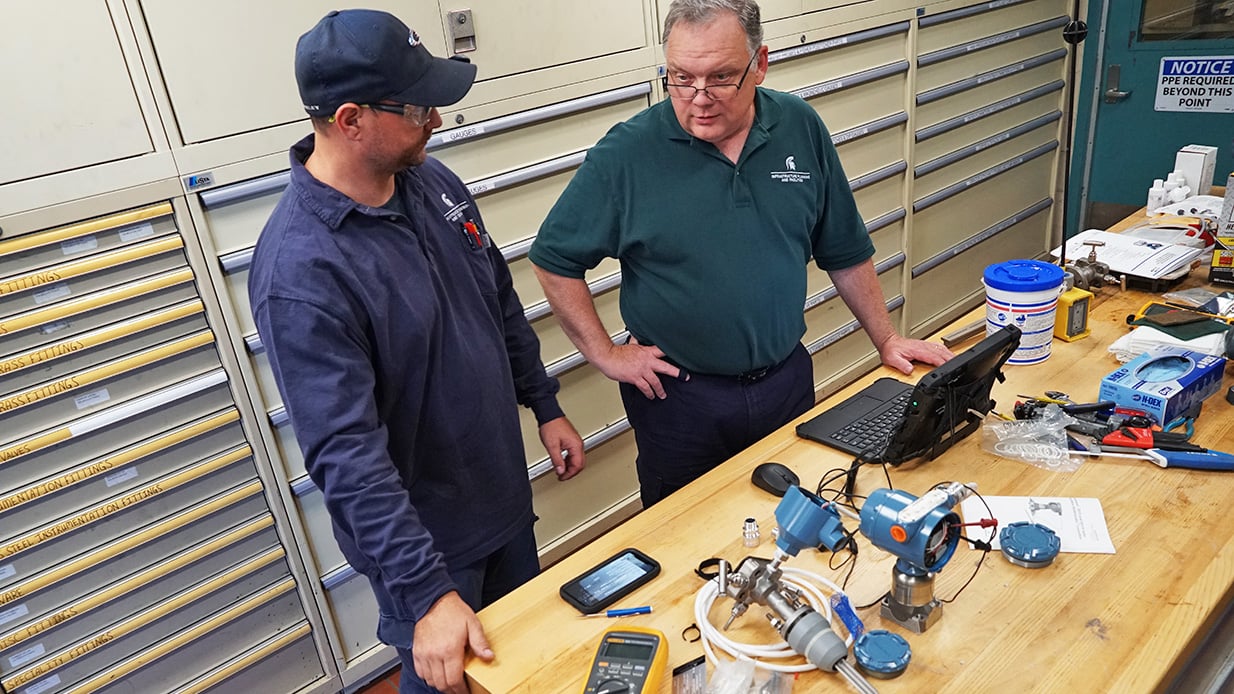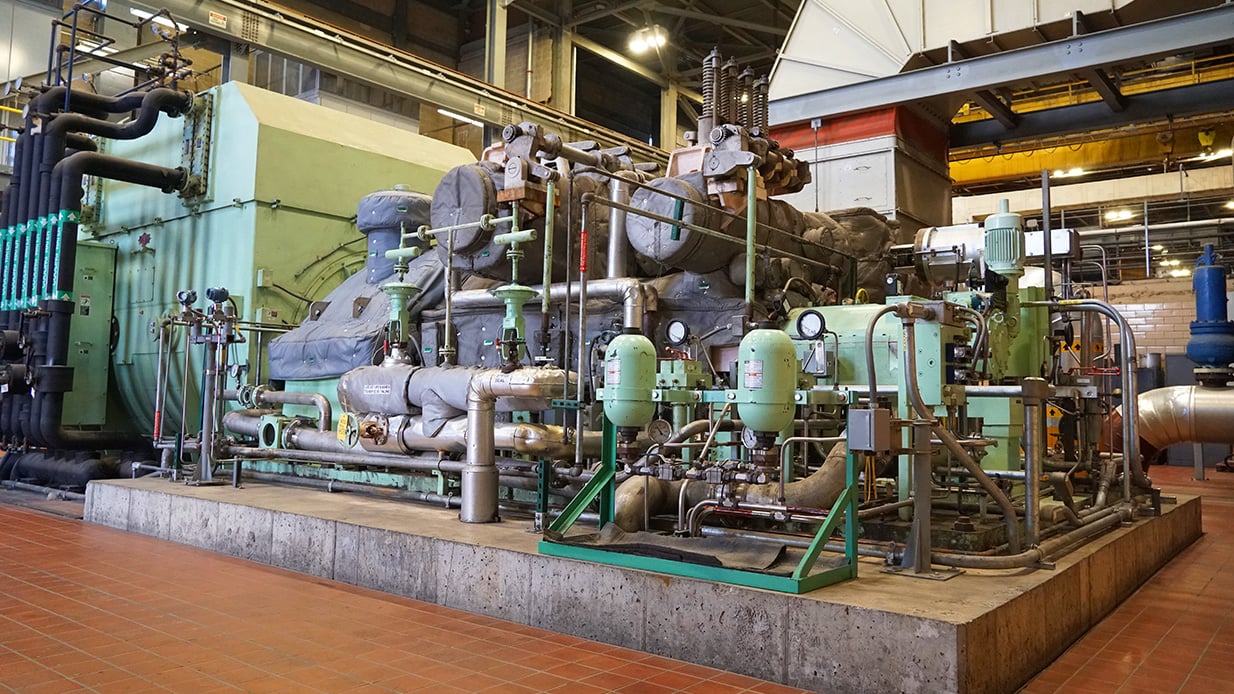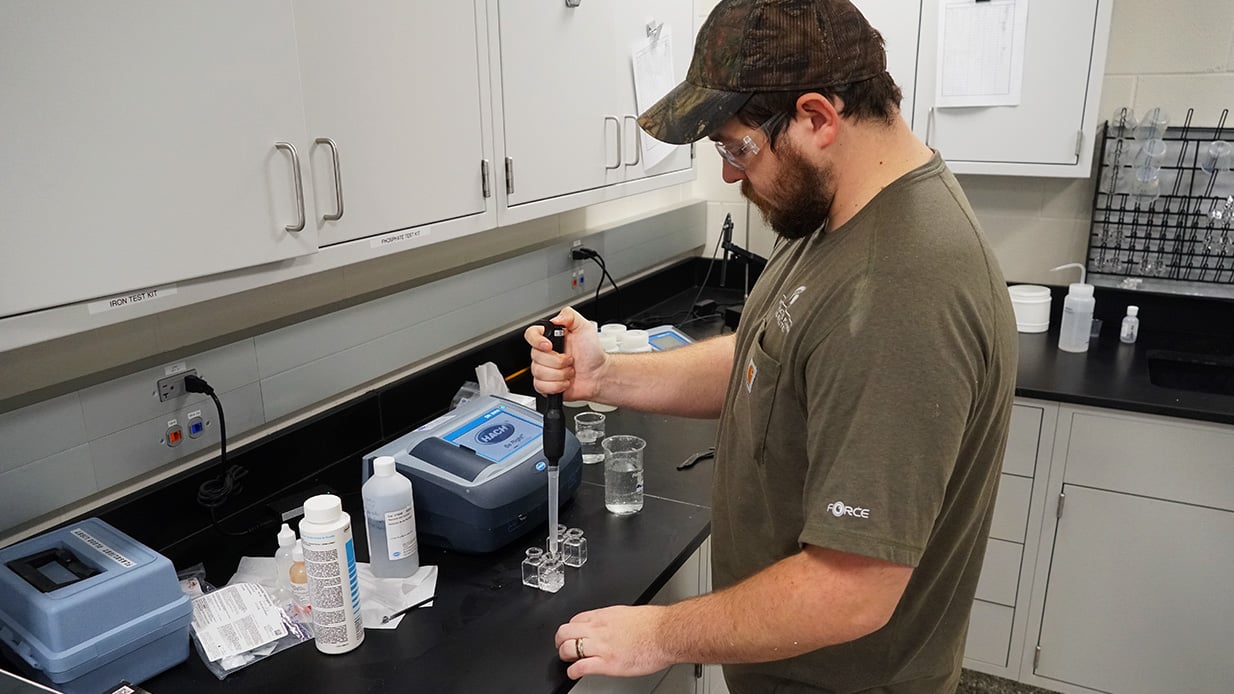Without the Power and Water Department of MSU Infrastructure Planning and Facilities, the East Lansing campus would be a much colder, unproductive place. Department staff operate two of campus’ most visible landmarks, the T.B. Simon Power Plant with its towering smokestacks, and the water treatment plant and tower next door.
Since 1965, the power plant has provided energy to campus in the form of steam for building heating and cooling, and electricity for powering everything from desk lamps to the Facility for Rare Isotope Beams’ heavy-ion accelerator.
Its newer neighbors, the water treatment plant and the 2-million-gallon, 160-foot-tall water tower, entered service in 2020. The plant removes iron and other minerals from campus water to improve its taste. Staff regularly test the treated water from sources throughout campus to ensure it is safe to drink.
